24 Essential European Bread Rolls to Bake at Home
European bread rolls tantalize taste buds with their rich culinary heritage and diverse textures.
Bakers across the continent craft these delectable round delights using time-honored techniques passed through generations.
Each region boasts unique ingredients that transform simple flour and water into extraordinary creations.
Small yet mighty, these bread rolls represent more than just a side dish - they embody cultural traditions and regional pride.
Their golden crusts and soft interiors tell stories of local agricultural practices and historical influences.
Bread rolls connect people through shared meals and time-honored recipes that transcend geographical boundaries.
You will find comfort in their warm, inviting presence at dining tables throughout Europe.
These 24 essential bread rolls promise a mouthwatering journey of flavor and tradition:
Essential European Bread Rolls for Every Meal
Bread rolls in Europe come in every shape and flavor, crusty, airy, or studded with seeds. Enjoy them fresh from the oven as the perfect start to any meal.
Pampushka
Pampushki are soft Ukrainian yeasted bread rolls prized for their versatile nature and comforting texture.
These small buns emerge from a simple dough blending milk, flour, eggs, sugar, butter, yeast, oil, and salt carefully kneaded into delicate balls.
Ukrainian kitchens craft two primary versions: sweet and savory variants that showcase regional culinary creativity.
Sweet pampushki burst with fillings like fruit jam, fresh berries, or cottage cheese, offering delightful flavor combinations.
Savory versions skip the filling but shine when brushed with intense garlic sauce and served alongside traditional borscht.
Bakers shape each bun with precision, ensuring a consistent round form that appeals to both visual and taste preferences.
Regional variations reflect family traditions and local ingredient availability, making each pampushki experience unique.
Bolo Levedo
Bolo levedo are traditional Portuguese sweet muffins from Azores islands, characterized by their light, fluffy texture and golden-brown exterior achieved through unique low-heat cooking.
Portuguese bakers carefully mix water, flour, sugar, eggs, butter, salt, milk, and yeast to create a smooth dough that transforms into small, round bread.
Skilled artisans shape the dough into soft balls, generously dusting them with flour before cooking slowly on a griddle.
Each muffin develops a delicate golden color as it cooks, requiring careful flipping to ensure even browning.
These bread treats emerge with a slightly crisp outside and tender inside, perfect for breaking apart and spreading with rich butter or sweet fruit preserves.
Warm bolo levedo pairs exceptionally well with strong coffee, making them an ideal breakfast or afternoon snack.
Generations of Azorean families have perfected this bread recipe, passing techniques from one generation to another.
Proziaki
Proziaki are traditional Polish bread rolls from the Subcarpathian region, characterized by their simple ingredients and rustic preparation method dating back to the 19th century.
Crafted with flour, baking soda, and varied liquid bases like milk, sour cream, or buttermilk, these rolls offer versatile eating options.
Historically baked on stove tops, modern proziaki are now dry-baked on standard pans for consistent results.
Rural Polish families traditionally enjoy these rolls with both sweet and savory toppings, including butter, cheese, and fruit preserves.
Generations have passed down recipes with slight regional variations, maintaining the bread's cultural significance.
Soft and quick to prepare, proziaki require minimal ingredients and technical skill.
Their straightforward production method reflects Polish countryside cooking traditions.
Bread enthusiasts appreciate proziaki for their simplicity and authentic flavor profile.
Kaisersemmel
Kaisersemmel are Austrian bread rolls distinguished by their iconic crown-shaped top created through five symmetrical overlapping incisions.
Emperor Franz Joseph I inspired these classic rolls during Austria's imperial era.
Bakers craft them using flour, yeast, salt, and sometimes butter to create a perfectly crusty exterior with an incredibly soft interior.
Professional bakeries typically decorate these rolls with sesame, sunflower, poppy, or linseed seeds for added texture and flavor.
Traditional preparation involves carefully shaping dough into round forms and precisely cutting the surface to achieve the signature royal crown design.
German-speaking regions widely serve these rolls for breakfast and alongside sandwiches or cold cut platters.
Professional bakers consider precise cutting techniques essential for achieving the authentic kaiser roll appearance.
Austrians consider these rolls a staple in their national bread-making tradition.
Zyma
Zyma bread rolls burst with Silesian culinary heritage, representing a classic oval-shaped white bread staple in Polish cuisine.
Polish bakeries craft these rolls with a distinctive crispy exterior and soft interior, typically adorned with poppy seeds for added texture and visual appeal.
Bakers traditionally prepare zyma using simple wheat flour, creating a versatile bread consumed daily across Upper Silesia.
Regional cooks frequently use these rolls as a key ingredient in traditional dishes like zymlok, a regional blood sausage.
Poppy seed sprinkles add a subtle nutty flavor and decorative touch to the bread's surface.
Silesian households often serve zyma alongside soups, meats, and breakfast spreads.
German and Polish baking traditions strongly influence the roll's preparation method.
Historical records suggest zyma bread has been a staple in Silesian diet for generations, connecting modern families to their rich culinary roots.
French Roll
French rolls represent classic French bakery craftsmanship with their slim, elongated shape and distinctive crisp exterior coupled with a tender inner crumb.
Bakers create these bread rolls using a simple mixture of flour, water, yeast, and salt, carefully crafting each piece to achieve perfect texture and flavor.
Sandwich makers frequently slice these rolls horizontally to accommodate various fillings like cold cuts, cheeses, and fresh vegetables.
Professional bakeries across France produce these rolls daily, ensuring consistent quality and traditional preparation methods.
Restaurant kitchens and home cooks alike rely on French rolls as a versatile bread option for quick meals and elegant sandwiches.
These bread rolls originated in French baking traditions and quickly became popular worldwide for their convenient size and excellent taste.
French rolls work perfectly with both casual and gourmet sandwich combinations, making them a staple in many cuisines.
Commercial bakeries and artisan bread makers continue to produce these rolls using time-honored techniques that preserve their authentic character.
English Muffin
English muffins are iconic round breads with distinctive nooks and crannies, originating in England during the 10th century and popularized globally by Samuel Bath Thomas in New York.
Yeast-based dough creates their unique texture, carefully griddle-cooked instead of baked for a crispy exterior and soft interior.
Traditionally split with a fork rather than sliced, these breads maximize surface area for butter, jam, or eggs Benedict toppings.
Breakfast menus worldwide feature these versatile muffins as a preferred bread option.
Bakers use specific techniques to develop signature peaks and valleys during cooking.
Commercial production now supports massive global consumption of these breakfast staples.
English immigrants introduced the bread to North America in the late 1800s.
Wheat flour, yeast, and careful griddle cooking define their unmistakable culinary profile.
Houska
Houska is a beloved Czech bread roll characterized by its distinctive braided shape and versatile culinary role.
Czech bakers craft this small wheat flour bread using milk, yeast, salt, and sometimes eggs to create a light, circular knot-like pastry.
Sea salt and caraway or poppy seeds adorn its crispy exterior before baking, giving the roll a golden-brown appearance.
Bakeries and supermarkets across Czech Republic sell these traditional rolls widely.
Breakfast tables frequently feature houska served with sweet or savory spreads, butter, and marmalade.
Czech families enjoy houska as a staple morning meal companion.
Restaurants and cafes also include this simple yet delicious bread in their morning offerings.
Mollete (Spain)
Molletes are soft, warm Andalusian bread rolls originating from Antequera, characterized by their distinctive oval shape and versatile breakfast profile.
Spanish bakers craft these traditional breads using a blend of yeast, plain and whole-wheat flour, salt, sugar, milk, and olive oil.
Kneaded into smooth oval disks, molletes transform into golden-brown delicacies through careful baking.
Locals typically slice these breads in half and toast them until slightly crisp.
Andalusian families often drizzle the warm bread with extra virgin olive oil and top it with fresh sliced tomatoes and a light sprinkle of salt.
Regional restaurants and home kitchens serve these comforting breads as a morning staple throughout southern Spain.
Restaurant patrons and home cooks appreciate molletes for their simple ingredients and satisfying texture.
Bap
Baps are traditional Scottish bread rolls characterized by their soft, pillowy texture and versatile nature.
Scottish bakeries craft these beloved rolls using flour, milk, sugar, salt, yeast, and butter or vegetable oil.
Sandwich lovers appreciate baps for their perfect shape and ability to hold various fillings like sausages, bacon, or boiled beef.
Scottish pubs often serve baps with Lincolnshire sausages and caramelized onions, creating a popular breakfast or lunch option.
Resembling hamburger buns, baps have a slightly flatter appearance compared to standard bread rolls.
Butter enhances their flavor, making them a staple in Scottish cuisine.
Bakers take pride in creating these soft, slightly irregular rolls that have become a breakfast favorite.
Scottish baps represent a simple yet delicious bread tradition that continues to delight diners across the United Kingdom.
Berliner Knuppel
Berliner knuppel are iconic German bread rolls distinguished by their unique half-moon shape and crisp exterior characteristic of classic Berlin street bakery traditions.
Berlin bakers craft these rolls using simple ingredients like water, flour, milk, yeast, and salt, carefully kneading the dough and allowing it to rest before shaping.
Skilled artisan bakers press the dough into disks, fold them into half-circles, and roll them into short oblong logs.
Steam-baked ovens transform the raw dough into golden-brown rolls with a perfectly crisp crust and soft, fluffy interior.
Berliners traditionally enjoy these bread rolls as a quick breakfast or street food snack.
Regional bakeries across Germany continue to produce these traditional rolls using time-honored techniques.
Germans consider Berliner knuppel a staple of their morning bread culture.
Bread lovers appreciate these rolls for their simplicity and authentic flavor profile.
Michetta
Michetta are traditional Italian white bread rolls born from Austrian culinary influences in Lombardy, featuring a distinctive bulbous shape with a crispy exterior and airy hollow interior.
Austrian officials originally introduced Kaisersemmel bread, which locals modified to create a crispier, more durable roll.
Regional bakers developed michetta by adjusting the original recipe to suit local tastes and preserve bread quality longer.
Named potentially from the term "micca" meaning crumb, these rolls quickly became a popular bread option in northern Italy.
Bakeries serve michetta fresh and typically fill them with ingredients like prosciutto, mozzarella, or pesto.
Regional variations include alternative names such as bigne, rosetta, and stellina.
Michetta represent a delicious example of cultural culinary adaptation and innovation.
Street vendors and home cooks embrace these unique bread rolls as a versatile sandwich base.
Portuguese Rolls (Papo Secos)
Papo secos are crispy Portuguese bread rolls celebrated for their light, airy texture and golden-brown exterior that crackles when you bite into them.
Portuguese bakeries across Portugal craft these rolls using simple ingredients like flour, yeast, salt, water, and a touch of butter.
Bakers carefully brush milk on the surface before baking to create a distinctive shiny crust that distinguishes papo secos from other bread varieties.
Families traditionally serve these rolls for breakfast or alongside meals, often pairing them with cheese, ham, or coffee.
Portuguese immigrants have spread the popularity of papo secos to countries like Brazil and Angola.
Street vendors and local bakeries consider these rolls a staple morning item throughout Portugal.
Each roll typically weighs around 50 grams and maintains a classic oblong shape.
Regional variations exist, with some bakers adding unique techniques to enhance their specific version of this beloved bread.
Mchadi
Mchadi represents a rustic Georgian cornbread crafted from simple cornmeal, salt, and water ingredients native to Georgia's culinary landscape.
Georgian families traditionally fry this flat bread in hot oil until achieving a crispy golden-brown exterior with a soft interior.
Rural communities especially cherish mchadi as a staple side dish complementing kidney beans and fresh cheese.
Regional variations include different cornmeal textures and cooking methods across Georgia's diverse regions.
Mountain communities often prepare thicker versions compared to coastal areas.
Georgians typically enjoy mchadi during breakfast or as an accompaniment to hearty stews and bean dishes.
Salt and water proportions determine the bread's final texture and flavor profile.
Kentish Huffkins
Huffkins are distinctive English bread rolls from Kent featuring a signature center dimple that sets them apart from traditional bread varieties.
Kent bakers crafted these flat, circular rolls using simple ingredients like flour, water, yeast, and lard.
Modern recipes sometimes incorporate milk powder for enhanced texture and flavor.
Historically, these rolls emerged as a practical bakery staple in southeastern England.
Artisan bakers shape huffkins with careful hand techniques to create their characteristic indentation.
Soft and slightly dense, huffkins pair wonderfully with butter or jam.
Regional bakeries continue producing these traditional rolls using time-honored methods.
British bread enthusiasts consider huffkins a cherished regional specialty with deep cultural roots.
Schlumbergerli
Schlumbergerli are Swiss bread rolls from Basel with a distinctive cracked golden crust that emerges from precise water spraying during baking.
Originating in 1872, these unique rolls combine simple ingredients like flour, yeast, salt, and honey to create a crisp exterior and soft interior.
Basel bakers carefully spray water on the dough to achieve the signature irregular surface texture.
Traditional preparation requires expert timing and temperature control to develop the perfect golden-brown color.
Each roll showcases a delicate crunch that contrasts with its tender inner crumb.
Small bakeries in Basel continue to make these rolls using time-honored techniques.
Salt and honey provide subtle flavor complexity to the bread's simple composition.
Generations of Swiss families have enjoyed these distinctive regional bread rolls as a breakfast or lunch accompaniment.
Bath Bun
Bath buns stand out as traditional English sweet bread rolls celebrated for their distinctive glazed exterior and unique flavor profile.
Originating in Bath, England, these circular rolls feature a dense texture with a lightly spiced taste.
Nib sugar and caraway seeds generously coat the shiny surface, creating a delightful crunch and aromatic experience.
Lump sugar nestled underneath adds an extra layer of sweetness to each bite.
Bakers carefully craft these rolls using traditional techniques passed down through generations.
Locals and visitors alike enjoy these buns as a classic teatime treat.
Royal bakeries and home kitchens continue to preserve this beloved regional specialty.
Bath buns represent a delicious piece of English culinary heritage that continues to delight bread enthusiasts.
Barm Cake
Barm cakes are soft, traditional bread rolls from North West England with a unique history rooted in brewing culture.
Brewers originally created these rolls using barm, the foamy yeast residue from beer fermentation, which gave the bread its distinctive texture and flavor.
Bakers would dust the rolls with flour before baking, creating a rustic, slightly crusty exterior that contrasts with the tender interior.
Working-class communities in Lancashire and Greater Manchester particularly loved these versatile rolls, often using them for sandwiches or as a quick, filling meal.
Industrial workers would frequently pack barm cakes for lunch, appreciating their portability and substantial nature.
Regional bakeries continue to produce these rolls using traditional methods, maintaining the connection to their brewing heritage.
Modern bakers sometimes substitute commercial yeast but still honor the original technique.
Barm cakes remain a nostalgic reminder of England's industrial food traditions, bridging past and present through simple, hearty bread.
Waterford Blaa
Blaa are soft, flour-dusted bread rolls originating in Waterford, Ireland, with a unique texture that sets them apart from other bread varieties.
Huguenot settlers introduced these distinctive rolls in the 17th century, creating a lasting culinary tradition in the region.
Bakers craft blaa exclusively from flour, water, yeast, and salt, resulting in a simple yet delicious bread.
Square or round shapes characterize these rolls, which feature a distinctive soft and chewy consistency.
Waterford locals traditionally enjoy blaa as a breakfast staple or sandwich base.
Irish bakeries continue to preserve this historic bread-making technique.
Regional pride surrounds these rolls, with many considering them an essential part of Waterford's food heritage.
Blaa have even received protected geographical status, ensuring their authentic preparation remains true to traditional methods.
Mohnflesserl
Mohnflesserl are traditional Austrian bread rolls featuring a distinctive braided shape generously coated with poppy seeds, representing a beloved breakfast staple across Austria.
Austrian bakeries craft these rolls with enriched dough made from milk, butter, and occasional sugar for a tender, mildly sweet profile.
Small twists or braids give these rolls their signature elegant appearance and textural complexity.
Poppy seeds contribute a rich, nutty flavor that transforms each bite into a sensory experience.
Small amounts of butter, jam, or cheese complement the roll's mild sweetness and crisp exterior.
Bakers carefully shape the dough to create light, airy interiors with slightly crunchy crusts.
German-speaking regions particularly cherish these poppy seed rolls as a morning breakfast option.
Home and professional bakers consider Mohnflesserl a simple yet sophisticated bread with deep cultural roots.
Hawkshead Wig
Hawkshead wigs are traditional bread rolls from Cumbria, England, featuring a distinctive oval shape and golden shiny surface created by brushing milk and sugar over caraway-seed-infused dough.
Bakers craft these unique rolls using flour, yeast, water, and lard, creating a thick, aromatic bread with historical connections to Lent and Christmas celebrations.
These specialty rolls emerge from the oven with a glossy top and rich flavor profile that hints at regional baking traditions.
Caraway seeds provide a subtle, earthy undertone to the bread's overall taste.
Historically significant in northern English culinary practices, the rolls represent a small but memorable part of local bread-making heritage.
Regional variations exist, with some communities associating the wigs with specific seasonal festivities.
Despite their near-extinction, Hawkshead wigs remain a fascinating glimpse into traditional English baking techniques.
Viena Andaluza
Viena andaluza are distinctive bread rolls originating from Spain's Andalusia region, distinguished by their golden, crusty exterior and pillowy white interior crafted from premium wheat flour.
Austrian baking techniques influenced these oval-shaped rolls during historical culinary exchanges.
Bakeries across southern Spain prepare these bread rolls using traditional methods passed through generations.
Spanish bakers knead the dough carefully to achieve the signature light texture.
Mediterranean wheat varieties contribute to the roll's unique flavor profile.
Gentle baking techniques ensure a crisp crust and tender crumb.
Regional bakeries pride themselves on maintaining authentic preparation standards.
Each roll represents a small piece of Andalusian bread-making heritage.
Schusterjunge
Schusterjunge bread rolls burst with Berlin's rich baking heritage, featuring a distinctive blend of rye and wheat flours that create a robust, aromatic profile.
German bakers craft these traditional rolls using carefully selected ingredients including caraway seeds and beer for deep flavor complexity.
Originating in Berlin's working-class neighborhoods, these rolls historically provided hearty sustenance for laborers and apprentices.
Caraway seeds add a distinctive earthy note that distinguishes Schusterjunge from standard bread varieties.
Yeast or baking powder helps achieve the rolls' signature dense texture and crisp exterior.
Salt balances the bread's intense grain flavors and enhances overall taste.
Beer contributes subtle moisture and depth to the dough's character.
Wheat and rye flour combinations ensure a rustic, substantial bread roll that connects contemporary diners with Berlin's culinary traditions.
Roggelchen
Roggelchen are small, oval-shaped bread rolls from Germany's Rhineland region, distinguished by their unique rye and wheat flour blend that creates a dense, tangy texture with a slightly sour undertone.
German bakers traditionally bake these rolls in connected pairs, reflecting regional baking techniques and communal food culture.
Rye flour dominates the recipe, contributing to the roll's robust flavor profile and distinctive dark color.
Regional bakeries carefully mix wheat and rye flours to achieve the perfect balance of texture and taste.
Home bakers and professional bakeries alike value these rolls for their traditional preparation method.
Roggelchen serve as a popular breakfast and sandwich bread in northwestern Germany.
The rolls pair excellently with butter, cold cuts, and local cheeses.
Regional consumers particularly enjoy them as a morning staple with coffee or tea.
What Makes a Bread Roll Distinct From a Loaf or Flatbread in European Cuisine?
Bread rolls stand out in European baking due to their size, shape, and texture, setting them apart from loaves and flatbreads:
What Are the Best Spreads to Pair With European Bread Rolls?
European bread rolls pair beautifully with a variety of spreads that complement their mild flavor and texture:
These pairings highlight the simple pleasure of European bread rolls, making each bite flavorful and satisfying.

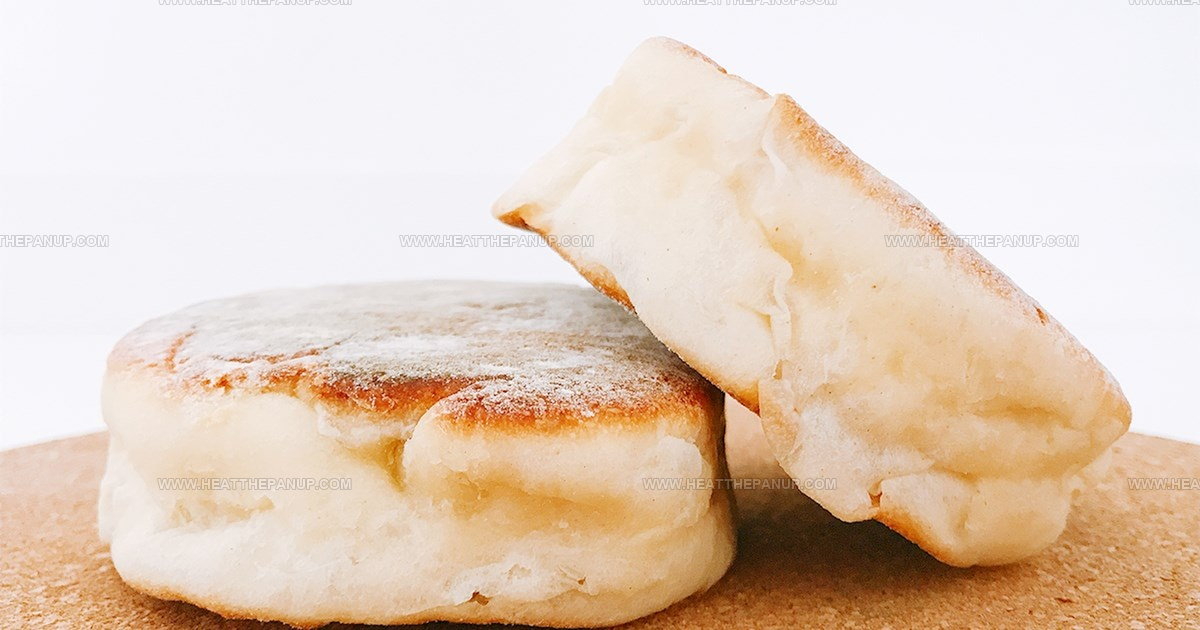
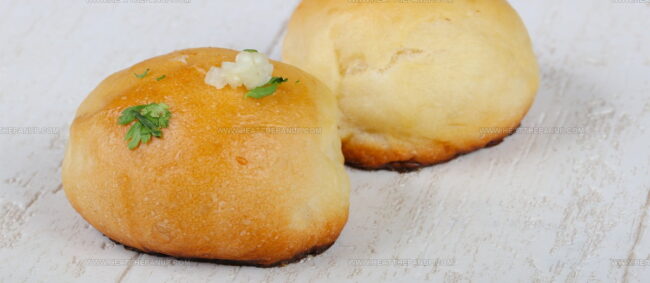
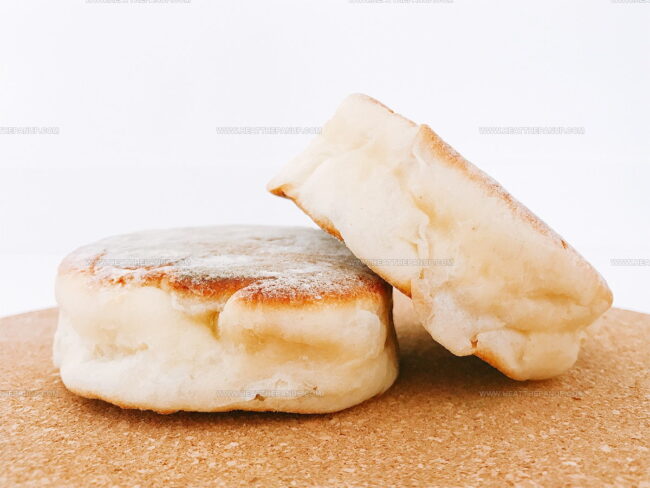
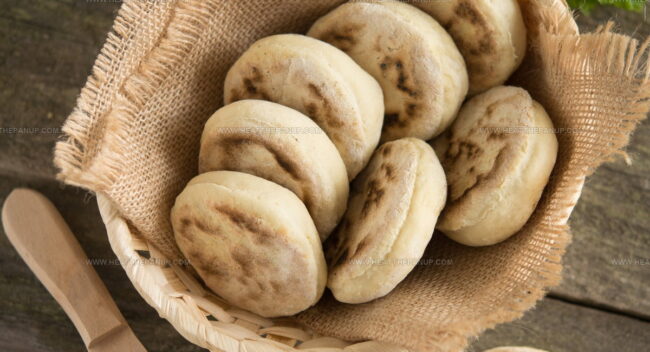
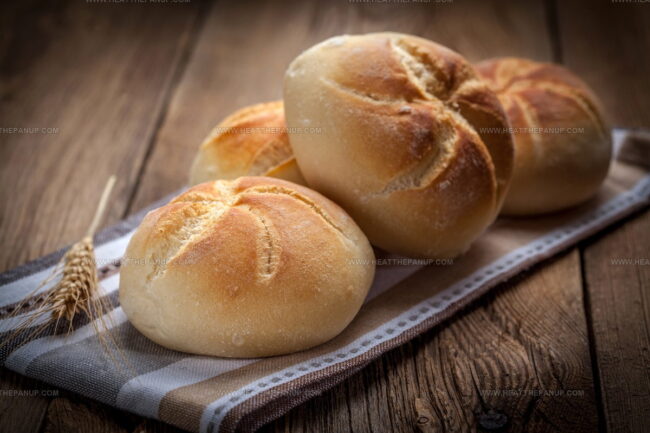
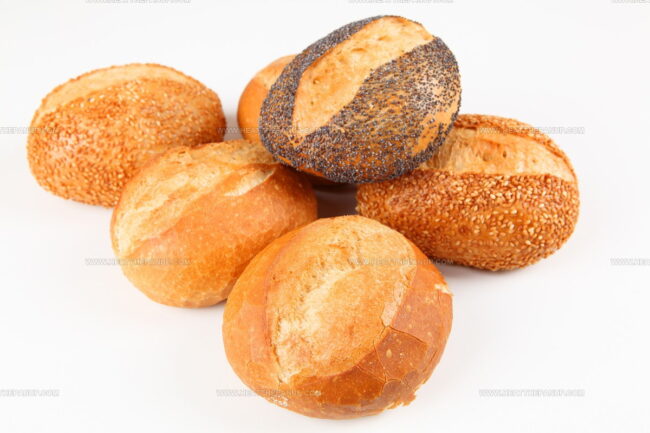
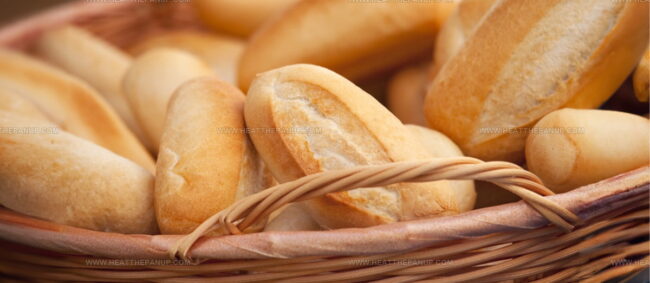
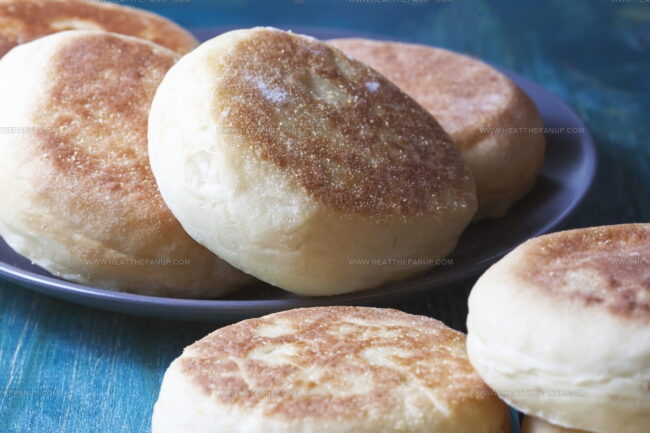
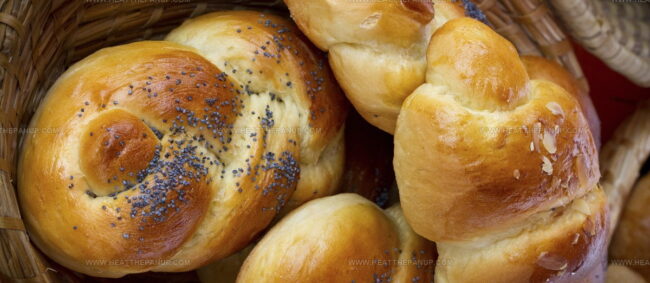
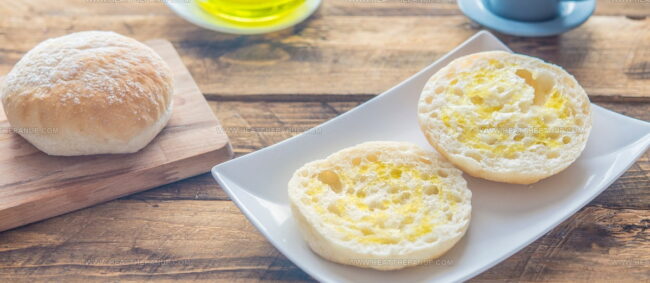
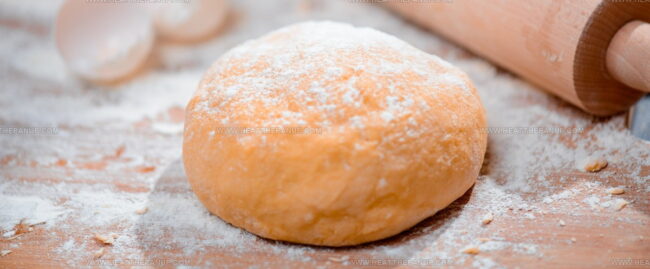
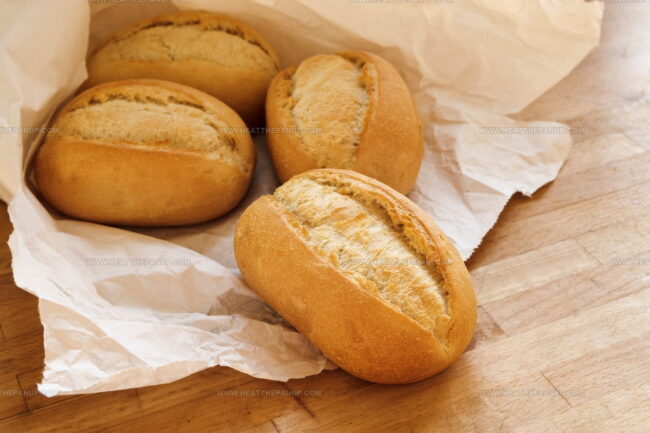
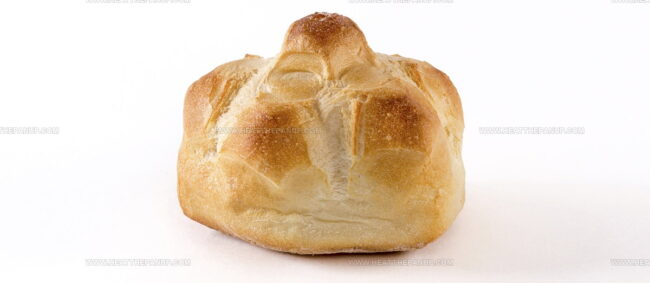
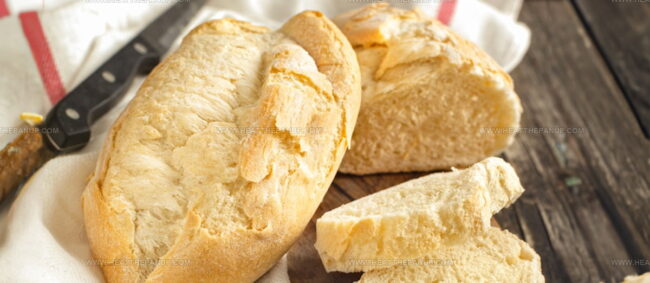
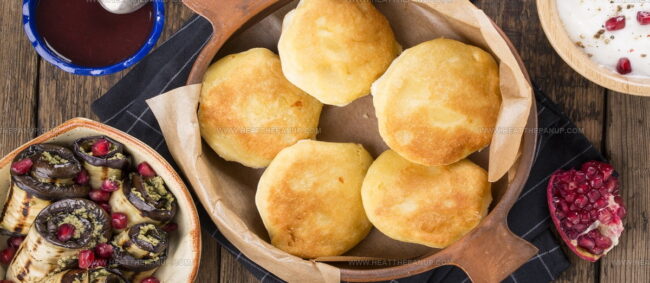
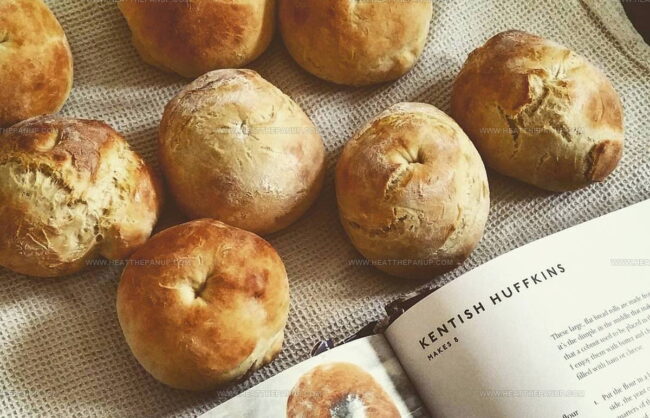
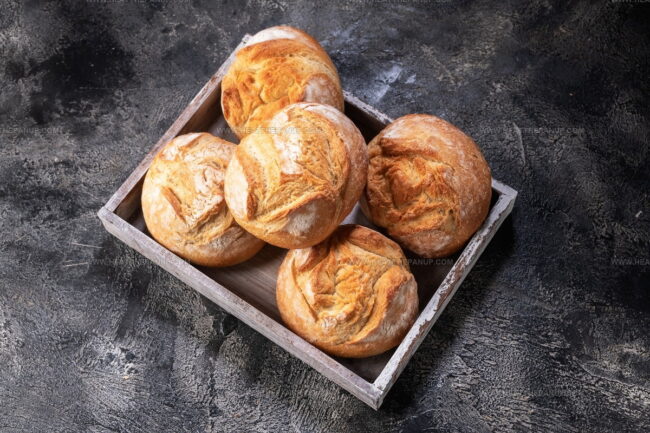
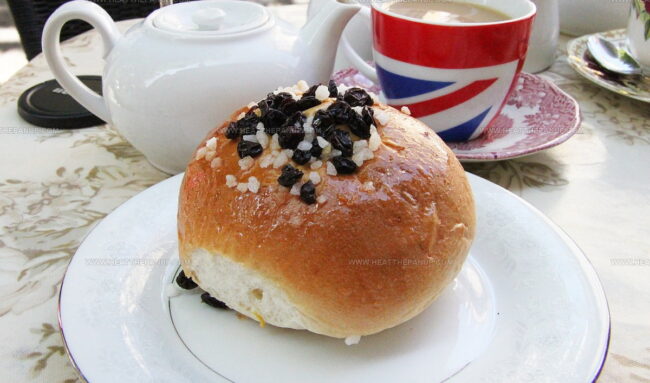
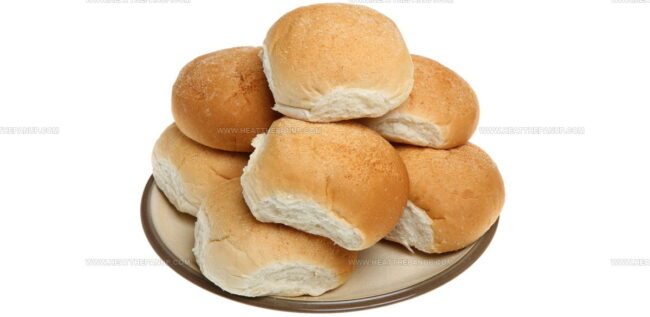
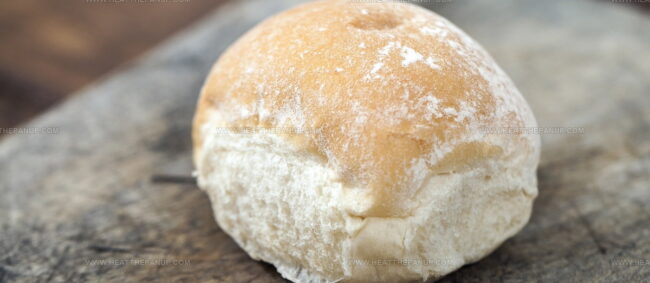
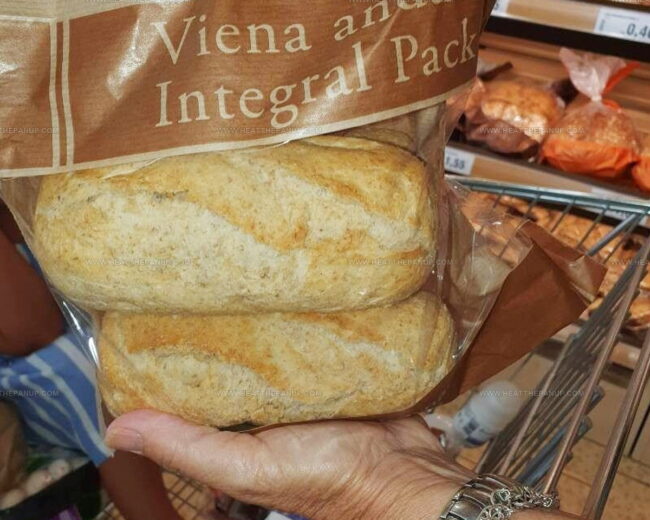
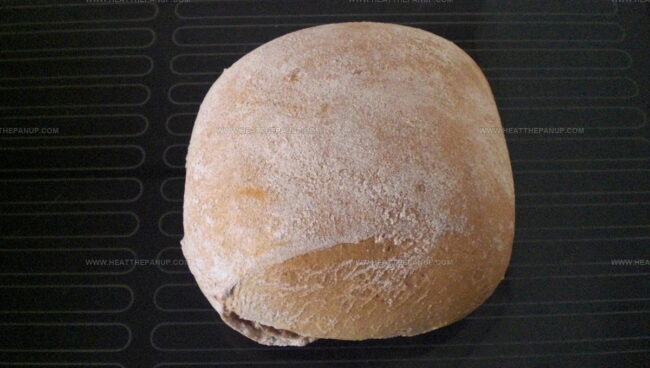
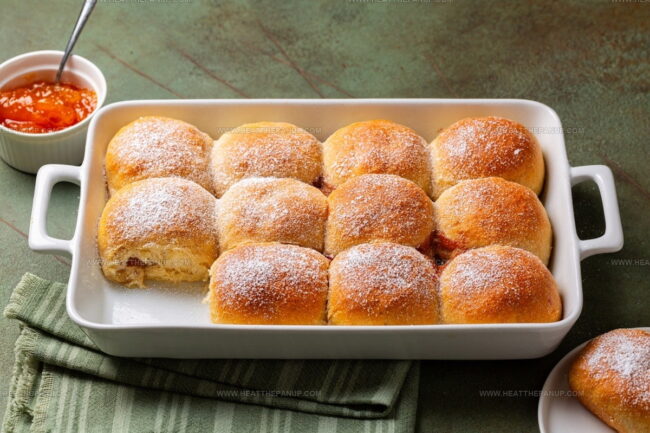
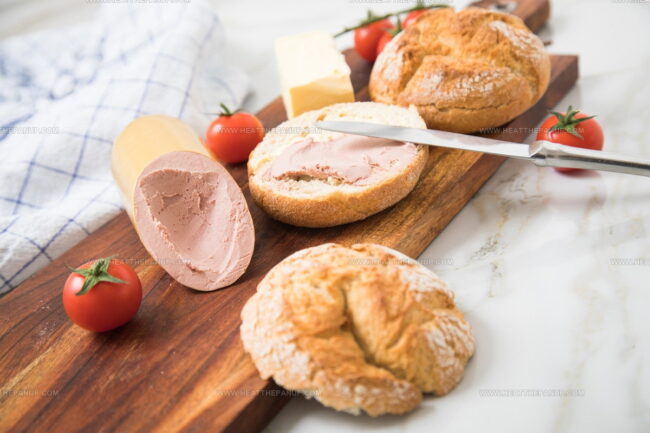
Angelina Wiles
Content Editor & Culinary Enthusiast
Expertise
Food Writing and Editing, Vegetarian and Vegan Cuisine, Baking and Pastry Arts, Sustainable Cooking Practices
Education
Portland Community College
Certificate in Culinary Arts
Focus: Emphasis on sustainable cooking practices, vegetarian cuisine, and food writing.
Oregon Culinary Institute
Diploma in Baking and Pastry Arts
Focus: Specialized training in artisanal baking, pastry techniques, and dessert presentation.
Angelina’s love for cooking started with handwritten family recipes and weekend trips to farmers’ markets around Portland. She followed her passion with a Certificate in Culinary Arts from Portland Community College, then perfected her sweet side with a Diploma in Baking and Pastry Arts at Oregon Culinary Institute.
Angelina believes recipes should feel like a conversation, not a science project. She’s all about helping readers trust themselves in the kitchen with simple steps, fresh ideas, and easy twists on classic meals.
When she’s not editing recipes, she’s baking bread, sipping coffee, or getting inspired by the changing seasons.